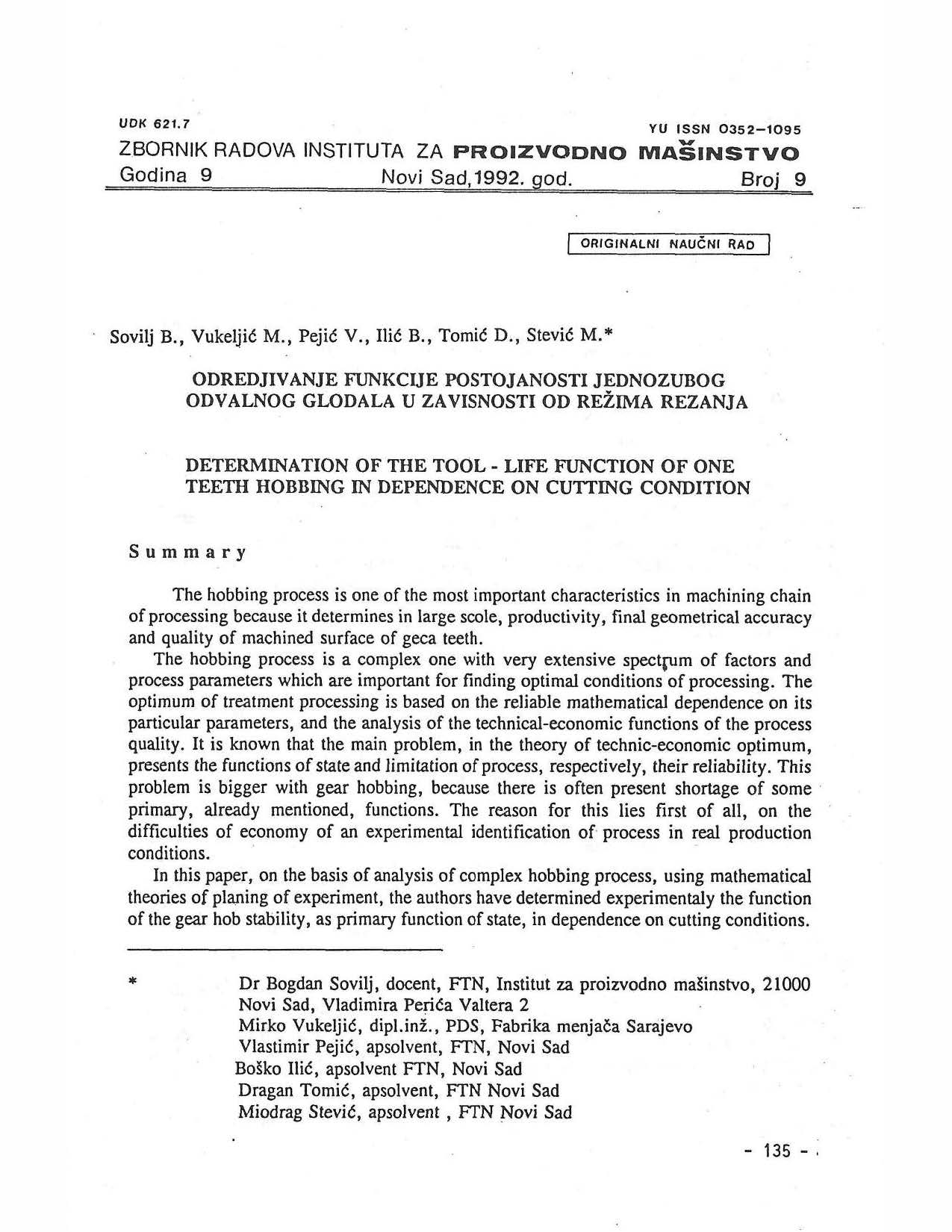Determination of the tool - life function of one teeth hobbing in dependence on cutting condition

Published 1992-12-01
abstract views: 14 // FULL TEXT ARTICLE (PDF): 8
Keywords
- productivity,
- geometric accuracy,
- quality,
- gear teeth
How to Cite
Copyright (c) 2023 Journal of Production Engineering

This work is licensed under a Creative Commons Attribution 4.0 International License.
Abstract
The hobbing process is one of the most critical operations in the machining chain because it significantly impacts productivity, final geometric accuracy, and the quality of machined surfaces on gear teeth. Hobbing is a complex process with a wide range of factors and process parameters that are crucial for determining optimal processing conditions. Achieving the best treatment outcomes relies on establishing reliable mathematical relationships among specific parameters and analyzing the technical-economic aspects of process quality. In the field of technico-economic optimization, one of the main challenges is dealing with the constraints and reliability of the process. This challenge is particularly pronounced in gear hobbing due to the frequent absence of certain key functions, as they are challenging to identify through experiments under real production conditions. In this paper, the authors have experimentally determined the stability function of gear hobbing, a primary state function, based on cutting conditions, through an analysis of the intricate hobbing process using mathematical design of experiments.

